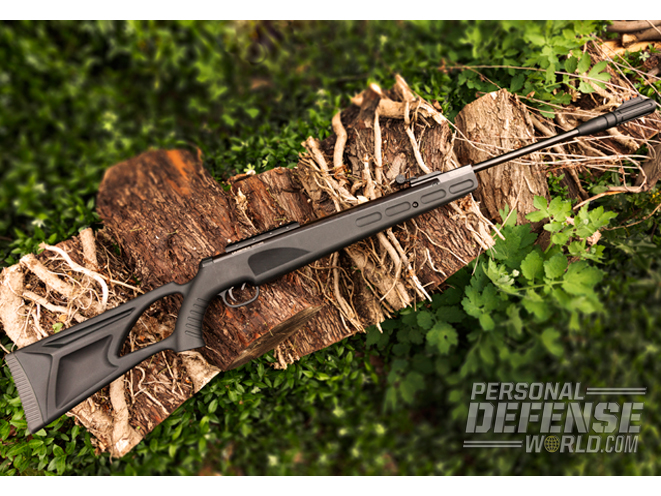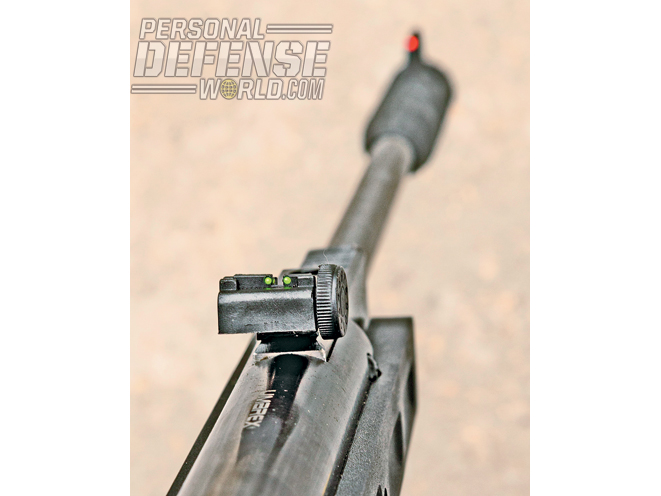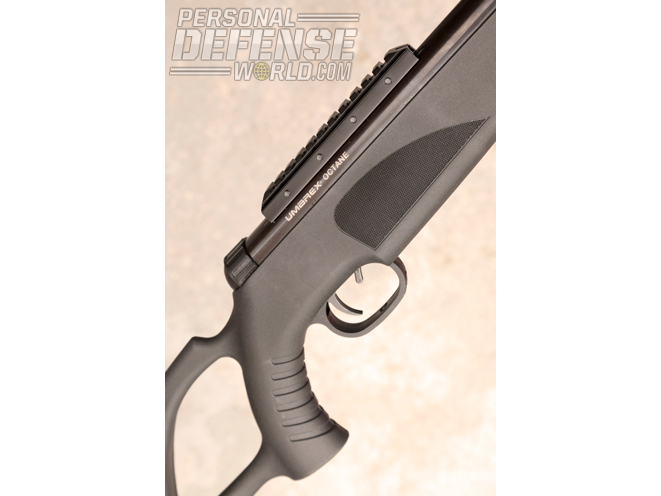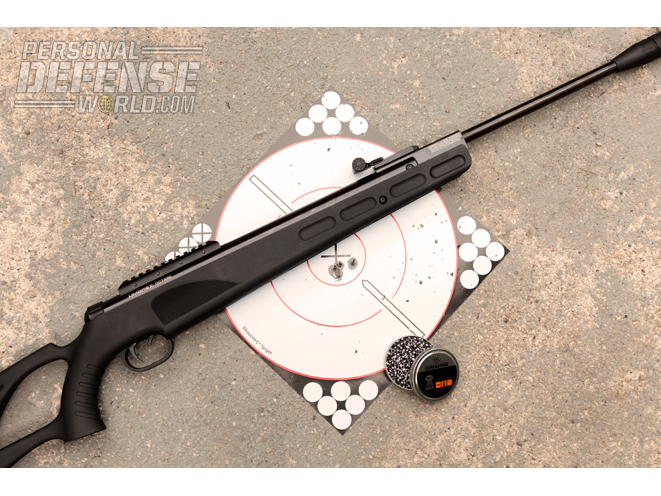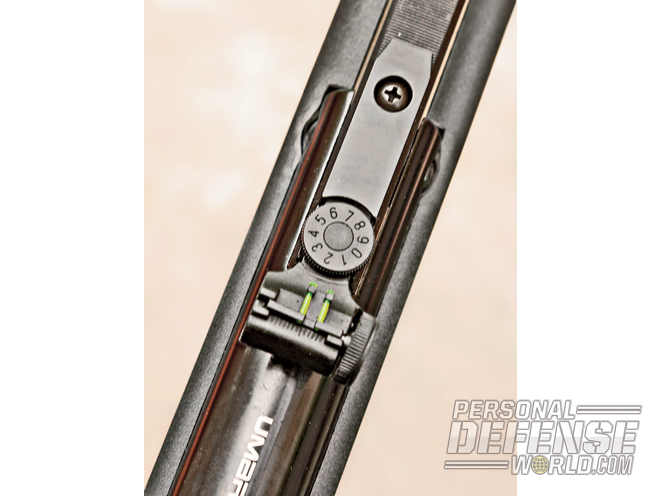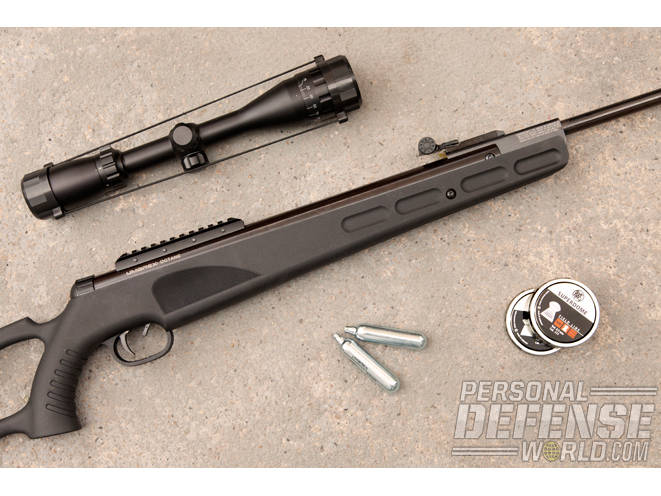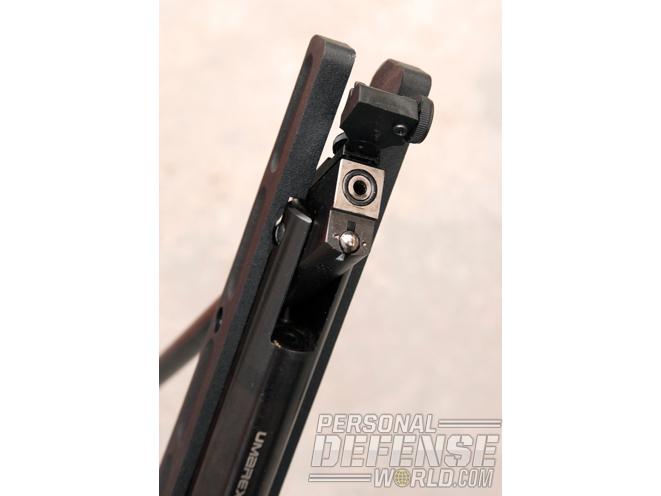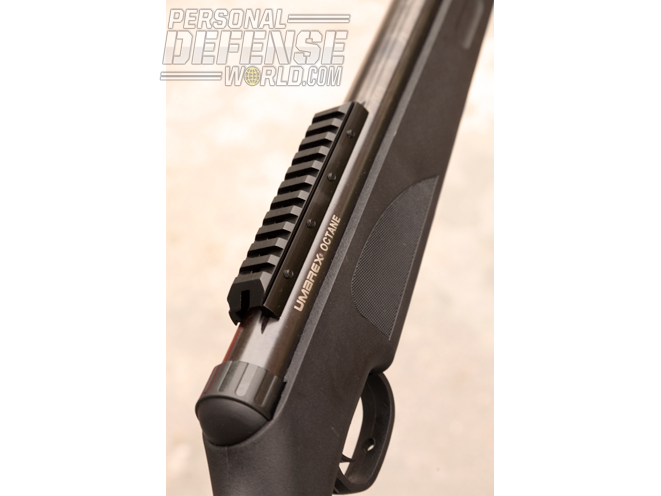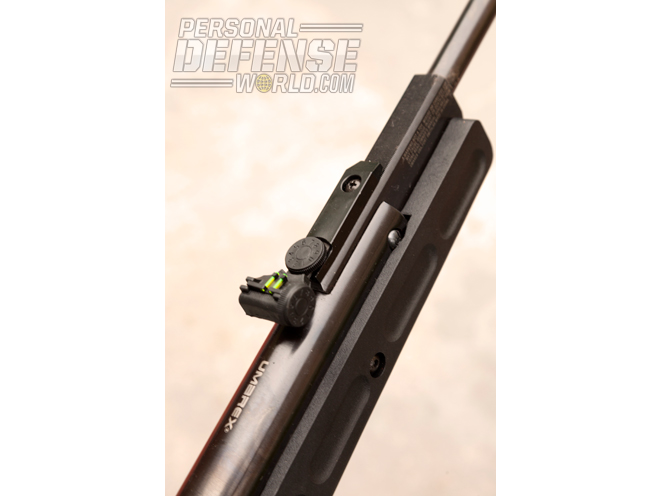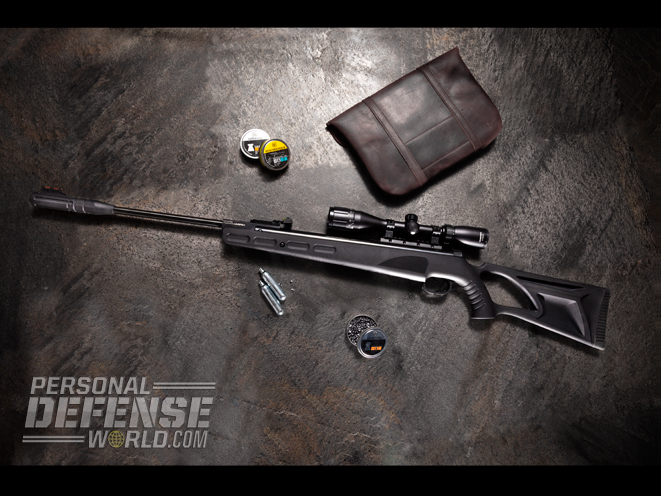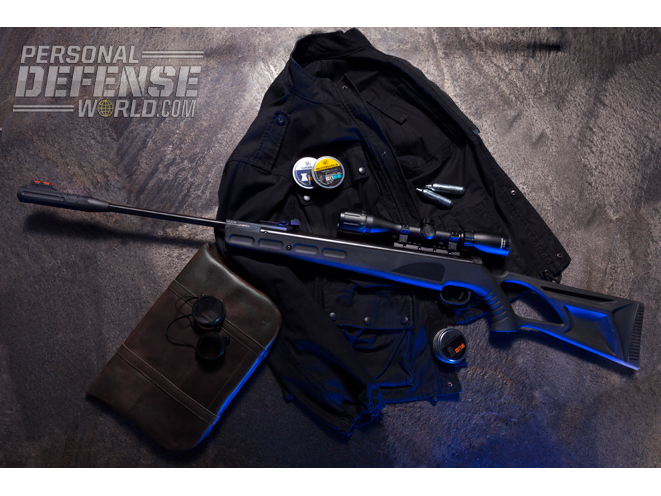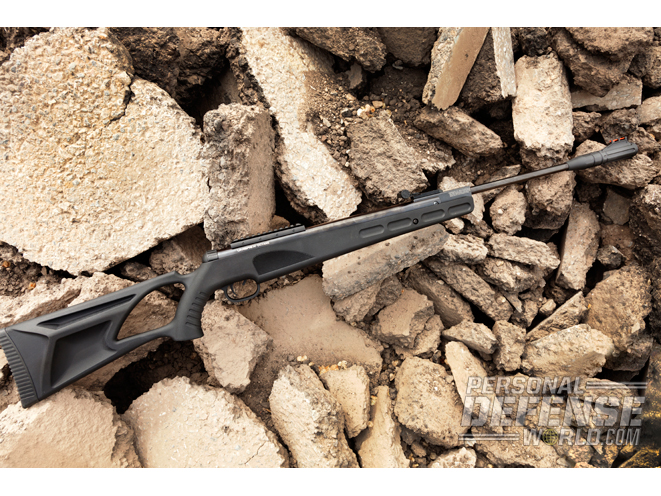I recently got my hands on Umarex’s new Octane air rifle, which features a break-barrel action as well as a gas piston and a SilencAir sound supressor. This air rifle appears to be very well made and was tightly fitted as it came from the box. The Octane felt very solid, with no looseness or rattles evident. Obviously, this rifle was carefully constructed to demanding specifications.
Gun Details

The Octane features an ambidextrous synthetic stock with an open space behind the pistol grip that serves as an exaggerated “thumbhole” design. The space behind the grip accommodates your entire thumb and palm, providing comfortable, solid control. A rubber shoulder pad caps the butt, while the hand-filling forend has four finger recesses on either side. The length of pull is 14.25 inches.
Advertisement — Continue Reading Below
The rifle’s 16.5-inch receiver is mated to a 19.5-inch barrel. The gun measures 48.5 inches in length from the muzzle to the butt. Its 9.5-pound heft makes it an air gun for serious shooters—it’s definitely not a toy! It’s heavy enough that I wouldn’t care to lug it very far afield. That weight helps steady the gun on target, which is an aid to accuracy.
A spring-loaded ball projecting from the rear of the barrel engages a detent in the receiver to lock the barrel firmly in place. A rubber O-ring seals the rear of the barrel to the receiver. This O-ring is replaceable if (or when) it wears out. The barrel is rifled for accuracy.
As mentioned, the Octane has both a gas piston and a sound suppressor. With the ReAxis Reverse-Axis gas piston, the piston moves in the opposite direction most other other gas pistons do. The Umarex ReAxis piston also has some benefits to offer over a spring-powered rifle, including smoother cocking, no spring torque, greater durability and dependable functioning in cold weather. There’s no mainspring to fatigue, even if you leave the gun cocked for hours. This is a real advantage over conventional spring-powered air guns.
Advertisement — Continue Reading Below
The Octane’s SilencAir muzzle attachment is a non-removable suppressor with five chambers designed to reduce the muzzle report. Even with the SilencAir suppressor, the rifle emits a sharp bang when the trigger is pulled. Indoors, this measured 105 decibels, enough to damage hearing over time. When you shoot outdoors, this drops to 80 decibels or so. I found my accuracy increased when I wore earplugs or other hearing protection. I’ve noticed the same thing when firing .22 rimfire rifles and handguns. You may not be aware of flinching when firing low-recoil guns, but you automatically react to any kind of muzzle blast.

The safety is a straight lever inside of the triggerguard, immediately ahead of the trigger. It automatically engages each time the rifle is cocked, which I think is a good idea. The safety is “on” when the lever is in the forward position. Pulling it rearward disengages it. This is an unusual arrangement—most inside-the-triggerguard safeties, like that of the M1 Garand, are disengaged by pushing them forward. Being someone who is familiar with the Garand-style safety operation, I think there might be the potential for confusion for those unfamiliar with the Octane’s system. If so, fully acclimate yourself to the way this safety works and use it correctly.
The rifle came equipped with a fully adjustable, green fiber-optic rear sight mounted not on the receiver, but on an extension of the barrel itself. The front sight features a single, high-mounted, orange fiber-optic tube.
Advertisement — Continue Reading Below
Because of the substantial recoil many air rifles generate, telescopic sights designed for air rifle use must be sturdily constructed to survive this abuse. Air rifles are much harder on scopes than most centerfire rifles are—a fact that surprises many shooters. Because of the recoil, stock screws and scope mounts have a tendency to work loose during long shooting sessions. Once the rifle has been broken in, judicious use of LocTite is called for.
The 3-9x40mm scope that comes with the Octane delivers a sharp image. A two-stage crosshair reticle makes aiming easy. Parallax adjustment is included for long-range shooting out to 300 yards, although that would be a real stretch for this .177-caliber rifle. Windage and elevation are click-adjustable in 0.25-MOA increments. The scope attaches to a short base that can be removed from the rifle. The Picatinny-style rail accommodates any Weaver-style rings.
Range Time
Advertisement — Continue Reading Below

One great thing about air rifles like this is that they shoot inexpensive, readily available pellets. With .22 rimfire ammunition practically extinct on dealer’s shelves, this is a real plus. Another advantage is that you can shoot the Octane in your backyard (as long as you have a good backstop). The report it makes is less noticeable and objectionable than a rimfire rifle. It’s an excellent choice for controlling gophers, rats and other pests. Firing this air rifle shouldn’t alarm other game in the area.
While the gun is supposed to generate 1,450 fps with .177 alloy pellets, at the range my test sample turned out velocities some 60 fps shy of that. Lead pellets exit the muzzle at a more sedate 1,250 fps.
I found the trigger action exceptional for an air rifle. The trigger is a single-stage affair with a crisp, 4-pound let-off. This contributes to good accuracy—25-yard, five-shot groups a half-inch in diameter was possible with RWS Supermag Field Line pellets. The trigger’s pull weight can be adjusted without dismantling the rifle.
Advertisement — Continue Reading Below
Cocking the pivoting barrel requires real muscle. According to the owner’s manual, it takes 42 pounds of pressure to accomplish this task. I didn’t measure the effort needed to lever the barrel fully open, but the 42-pound benchmark doesn’t seem out of line. This is another indication the Umarex Octane is intended strictly for adults. Most children would have difficulty cocking this rifle. Pellets are manually loaded directly into the chamber once the gun is cocked. Just make sure the pellet isn’t inserted backwards.
The gas piston operation offers several advantages compared to spring-piston operation. These include lower noise and vibration, more consistent velocities and more manageable recoil. Those are good reasons to choose a gas piston air rifle instead of a spring-piston gun.
The price is $281.09, which I think is very reasonable for an air gun of this quality. Because it isn’t a conventional cartridge-fed firearm, it can be mailed to you directly without the need for a Federal Firearms License (FFL). Finally, the Umarex Octane comes with a three-year warranty, which indicates the manufacturer’s confidence in the rifle’s quality.
Advertisement — Continue Reading Below
For more information, visit http://www.umarexusa.com.
This article was originally published in the 2015 issue of GUN ANNUAL. Subscription is available in print and digital editions here.
Advertisement — Continue Reading Below
